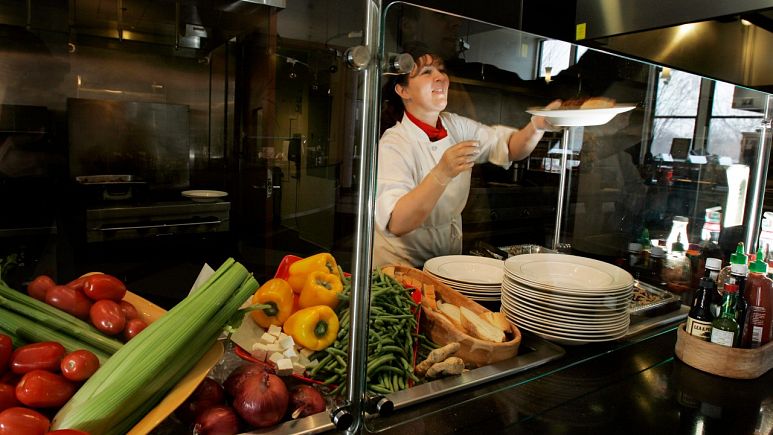At the front of the canteen at the Montreal Polytechnic University, students have recently been able to see next to the price of each food item its carbon footprint, as part of an awareness initiative that provides surprising information to many.
“I was surprised to see that a meat dish was rated better than a vegetarian dish,” says Elisabeth Labonte, a chemical engineering student.
Rating ranges from A to F
Three hot dishes are rated from A to F every Thursday, corresponding to “a certain range of CO2 emissions,” says Patrick Cigana of the Canadian university’s sustainable development office.
Segana notes that this student-supported project “aims to contribute to education and awareness.”
Marie Lorio, a 22-year-old student, confirms that this initiative “would help students determine what is best for the environment,” suggesting that the prices of dishes that pollute the environment be reduced.
“The real change in our mentality, we really have to be aware of this criterion,” says Daniel Fernandez, a master’s student preparing to eat a B-rated ham sandwich compared to a D+ veggie focaccia because it contains cheese.
From farm to plate
To calculate the carbon footprint of each plate, the university hired analysts from the International Reference Center for Life Cycle Analysis and Sustainable Transition, located just about 100 meters from campus.
A small team of researchers and students calculated the carbon footprint of each ingredient, “based on databases developed during previous studies.”
“It really starts from the field, that is, from the moment the plant is planted, all the way to serving the dish in the cafeteria,” explains the Assistant Director General of the Research Center, Francois Saunier.
Saunier notes that his calculations include all phases of transportation, but also food waste and cooking in the university’s canteen.
And the researcher adds, “Some of the results prompt the consumer to ask questions, and this breaks inherited ideas,” stopping at the high carbon footprint of cheese and rice, “which is an important source of methane emissions.”
“immense power”
The food system (including food production, packaging and distribution) is “the number one source of greenhouse gas emissions globally,” reminds Carole Anne Lapierre, an analyst in agriculture and food systems at Equiter.
The University of Montreal’s multitechnology initiative “gives us enormous power as consumers, because we are able to make different choices,” says the expert, while acknowledging the difficulty of completely changing the diet. In this context, it calls for the adoption of this change “in the form of challenges”, that is, in stages.
Although the project at the university in Quebec is unique in Canada, similar initiatives appeared in some British restaurants or at a French university in 2019.
But for some, “the main priority remains the price,” especially in light of the accelerating inflation at this stage, according to student Shalaby Riyad, 24, after paying for his food.












